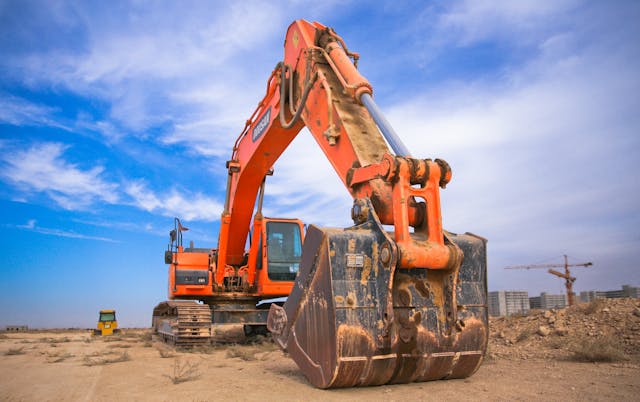Cranes are crucial in the construction industry. They enable the precision and efficiency of lifting and moving heavy materials. They increase project efficiency and safety, making building more intricate and higher buildings possible. Their versatility and capability make them indispensable for modern construction projects.
The Integral Role of Cranes in Construction
Cranes are essential to the construction industry because they significantly increase productivity and safety on building sites. They are necessary for many construction projects, from modest residential structures to expansive infrastructural initiatives, because they lift and move heavy objects precisely. Whether you are considering acquiring a crane for sale or renting one, comprehending its advantages can significantly influence the effectiveness and triumph of your undertaking.
With their towering presence and robust lifting capabilities, cranes simplify complex tasks requiring considerable manual labor. This efficiency boost expedites project timelines and minimizes the risk of workplace injuries. For instance, cranes allow for the safe and precise placement of heavy beams and other structural elements, which reduces the need for labor-intensive and potentially hazardous manual handling. This level of precision and safety underscores why cranes are fundamental to the modern construction landscape.
Types of Cranes and Their Uses
There are several types of cranes, each meticulously designed for specific functions. Tower cranes, for example, are essential for erecting skyscrapers and large buildings, providing the necessary height and heavy lifting capacity. These cranes can reach great heights and lift heavy materials, making them ideal for constructing tall structures. Conversely, mobile cranes are versatile and easily movable, making them suitable for various building sites. Their mobility allows them to be used for multiple tasks, from lifting and moving materials on a single construction site to being deployed across multiple sites.
Crawler cranes are used for heavy-duty tasks, particularly on rough terrain where stability is crucial. These cranes have tracks instead of wheels, which provides better stability and allows them to operate on soft or uneven ground. This makes crawler cranes an excellent choice for construction projects in challenging conditions, such as wind farms or large infrastructure projects like bridges and tunnels.
Choosing the Right Crane for Your Project
Selecting the appropriate crane ensures efficiency and safety on a construction site. Building height, ground conditions, and material weights must be considered. For instance, a tower crane might be the best option if your project requires working at great heights. These cranes are designed to lift materials to significant heights and are anchored to the ground or a building to provide stability.
Conversely, a mobile crane would be more suitable if you need a crane that’s easy to relocate. Because of its versatility, mobile cranes may be used for lifting, loading, and material transportation, among other duties. Their ability to move quickly and easily from one location to another makes them ideal for projects requiring frequent repositioning or working on multiple sites simultaneously.
Technological Advancements in Crane Operation
Modern cranes are now equipped with technological innovations that significantly enhance their functionality and safety. Features like GPS tracking, advanced load monitoring systems, and automated controls have revolutionized crane operations. GPS tracking allows for precise positioning and movement of cranes, ensuring accurate placement of materials. Load monitoring systems help operators manage and control the weight of the load being lifted, reducing the risk of overloading and potential accidents.
These developments strengthen safety regulations while also increasing operational effectiveness. Automated controls, for instance, can help to reduce human error by providing precise and consistent control of the crane’s movements. Remote operation is another feature of this technology that lets personnel operate the crane from a secure distance. Integrating these technologies into modern cranes has made them safer and more efficient, reducing the likelihood of accidents and operational failures.
Safety Considerations When Using Cranes
When operating a crane, safety comes first. Ensuring operators are well-trained, the equipment is regularly maintained, and safety protocols are strictly followed can significantly mitigate the risks involved. Operators may operate a crane safely and effectively by understanding its capabilities and limits with proper training. Regular equipment maintenance ensures that it is in good working order and reduces the risk of mechanical failures.
Additionally, integrating modern safety technologies such as automatic shut-off systems and overload sensors has contributed to a safer working environment on construction sites. Automatic shut-off systems can stop the crane’s operation if they detect unsafe conditions while overloading sensors alert operators if the load exceeds the capacity. These safety features help to avoid accidents by guaranteeing that the crane is operated within its safe bounds.
Case Studies Highlighting Crane Efficiency
Real-life examples provide valuable insights into the efficiency of cranes in construction projects. For instance, the Burj Khalifa in Dubai saw extensive use of tower cranes, facilitating its massive structure’s quick and safe assembly. These cranes were instrumental in lifting and placing the building’s components, ensuring the project was completed on time and within budget.
Similarly, mobile cranes have proved invaluable in disaster relief operations, enabling the swift removal of debris and other heavy materials in the aftermath of hurricanes and earthquakes. Their ability to be quickly deployed and set up makes them an essential tool in emergency response efforts. Mobile cranes have helped clear roads, restore infrastructure, and support recovery efforts in affected areas by providing the necessary lifting power.
The Future of Cranes in Construction
With automation and artificial intelligence increasingly integrated, crane technology has a bright future. Innovations like autonomous cranes that can operate independently are being developed, promising to enhance efficiency and safety in construction projects further. According to the Construction Equipment Guide, these advancements are expected to create new opportunities for quicker and more precise project completion.
Furthermore, the growing focus on sustainability drives the development of eco-friendly cranes. As Construction Dive reports, these cranes aim to minimize environmental impact, aligning with the broader industry trend towards green construction practices. By reducing emissions and energy consumption, eco-friendly cranes can help to create a more sustainable construction industry.

